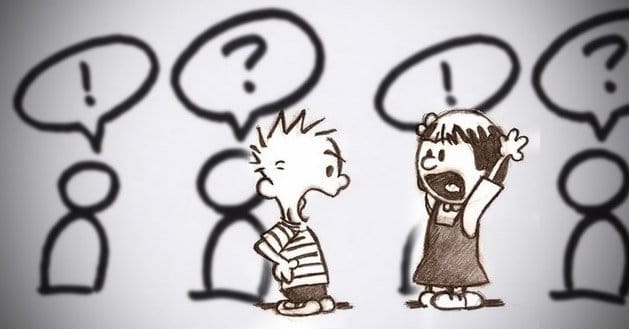 Written by ContentPowered.com
Written by ContentPowered.com
Everyone was new to Twitter at one time or another, but if you want to get along with the rest of the denizens of the Twittersphere, you’re going to have to learn all there is to know about hashtags. Using hashtags effectively is one of the best ways to popularize your Tweets, and one of the best ways to find friends and groups that interest you on Twitter. And with a few tricks, a little thought, and a touch of planning, anyone can use hashtags like a social media pro.
What’s a Hashtag?
Hashtags are composed of the pound/number sign, grouped with a relevant keyword, like #example. These tags were designed to help you used to clarify the subject or topic of your Tweet, help you to discover and attract new followers, and to make your tweets easier to find. Since the practice first surfaced almost a decade ago, hashtags have become so popular that they’re now prominent features on many major social media sites, including Pinterest, Instagram, and Facebook.
Tags aren’t just a good way to engage with a community on Twitter, but also to identify and engage individuals that share common interests. You use hashtags to start new conversations, or to join an existing conversation about a topic or event. Hashtags are also a good way to open spontaneous categories for events, because when you tag your content with the right categories, you increase the chances of getting your message into the crowded streams of tweets on a user’s page.
Finally, hashtags are generally abbreviated in order to help accommodate the 140 character tweet limit, which writing hashtags counts towards. That’s why tags like #ThankGodItsFriday are generally broken into shorter and simpler tags like #tgif. The closer you push towards the 140 character limit, the more hashtags become a potential burden on your tweets. If you don’t leave at least some room after your messages, readers will have to edit down what you said in order to tag it as retweeted.
Hashtag Philosophy
Before learning about hashtags, it’s important to put them in perspective. Always remember to write your content first and tag second. This will help keep your tags relevant and prevent you from abusing the wrong tags. The type of tags you use depends on the type of audience that you want to attract. If you want to attract a large audience, use general and popular hashtags like #love, #personal, #happiness, and so on. On the other hand, if you’re looking to draw a more engaged audience, use you’ll want to utilize original hashtags.
If you’re bothering to use hashtags on your tweets, you probably want to increase your following, join in to larger conversations, and send your messages to more relevant audiences. In that case, it’s worth learning a few hashtag creation tricks and guidelines for creating original hashtags.
The most important thing to know is that you should always follow the rule of relevancy. The more relevant your tags are to what it is you’re saying, the more engagement you’ll get with your tweets. While a using general tag like #business is okay for targeting broad audiences, more specific tags like #KitchenTips are better for getting your tweets to the eyes of a more specific and relevant audience.
If you’re tagging for professional reasons, you’ll want to research your hashtags before you use them. The best way to help ensure you’re using a tag correctly is to do a quick search for that tag before you use it. A quick search can help you determine how many people use the tag, if any.
Hashtag Etiquette
It’s crucial that you follow hashtag etiquette to get along on Twitter. Those who break these general practice rules of hashtag use are generally uniformly frowned upon, often resulting in the loss of followers. These rules are doubly important to consider ever since hashtags have become so ubiquitous on the Internet.
The most basic rule of hashtag etiquette is to avoid overusing hashtags. If every other post you write is filled to the brim with hashtags, your content will look spammy and people at best be wary of you and at worst avoid you entirely. For Twitter, more than two hashtags is generally overkill. Just focus on the important keywords and leave out the marginally relevant ones. If you’re looking for the perfect number of hashtags for your post, Twitter recommends between one and three.
Explain Your Tag
If you ever endeavor to create a hashtag that’s off the beaten path of popular use, it’s crucial that you take the time to provide an explanation of what that tag means. This is the best way to let your readers know what your conversation is all about. If you’re thinking about venturing on to make an original hashtag, you should first ask yourself if that hashtag adds value to your post or if it’s just a ploy for drawing attention to your content.
Simplicity Above All Else
Anytime you’re using a new hashtag, try and stick to words that are easy to remember, spell, and relate to. The more self-explanatory your hashtag, the better it will be. Using several words in one hashtag can make it difficult to read, comprehend, and reply to. Long hashtags utterly defeat the purpose of concision that Twitter is all about. And because hashtags are part of the 140 character limit, it’s more than just practical to keep them succinct.
Speaking of simplicity, whenever you find yourself writing a hashtag composed to two or more words, it’s generally good practice to write in CamelCase. You can do that by capitalizing the first letter of each word, which makes hashtags far more readable, like #BusinessTips. It looks professional and it’s bound to increase engagement on your page.
Anytime you create a hashtag that’s already in use you stand the risk of creating confusion for yourself and others. In a best case scenario, your Tweet is blasted to readers who aren’t interested in what you have to say, in a worst case scenario, you say something inappropriate or offensive without realizing it. Always be conscious of what people use tags for before you use them, or you’ll receive a lot of flak from the community.
Three Twitter Hashtag Resources
Depending on how far you want to take your tagging, it’s worth knowing about a few different Twitter hashtag resource sites. Among these sites you can find tools to help you identify the perfect tags, figure out what’s trending on twitter, and keep your finger on the pulse of the Internet as new hashtags take off and decline.
HashTags.org
This site includes information on what hashtags are just starting to trend and which hashtags are on the decline. It also includes popular hashtags by category thanks to a fairly comprehensive database of Twitter keyword usage.
Twitter.com/search-home
This is the official Twitter search page. Just provide the search field with a hashtag and you’ll get all the tweets that use that tag in real time. This is one of the fastest and most reliable ways to figure out how active a tag is before you start using it.
Trendistic.com
If you want to keep a close eye on emerging trends and compare how popular keywords are, Tendistic is the perfect tool for the job. Provide Trendistic with a hashtag and you’ll receive detailed charts of how the usage of that tag changes. You can check out tags from hour to hour, or month to month.

